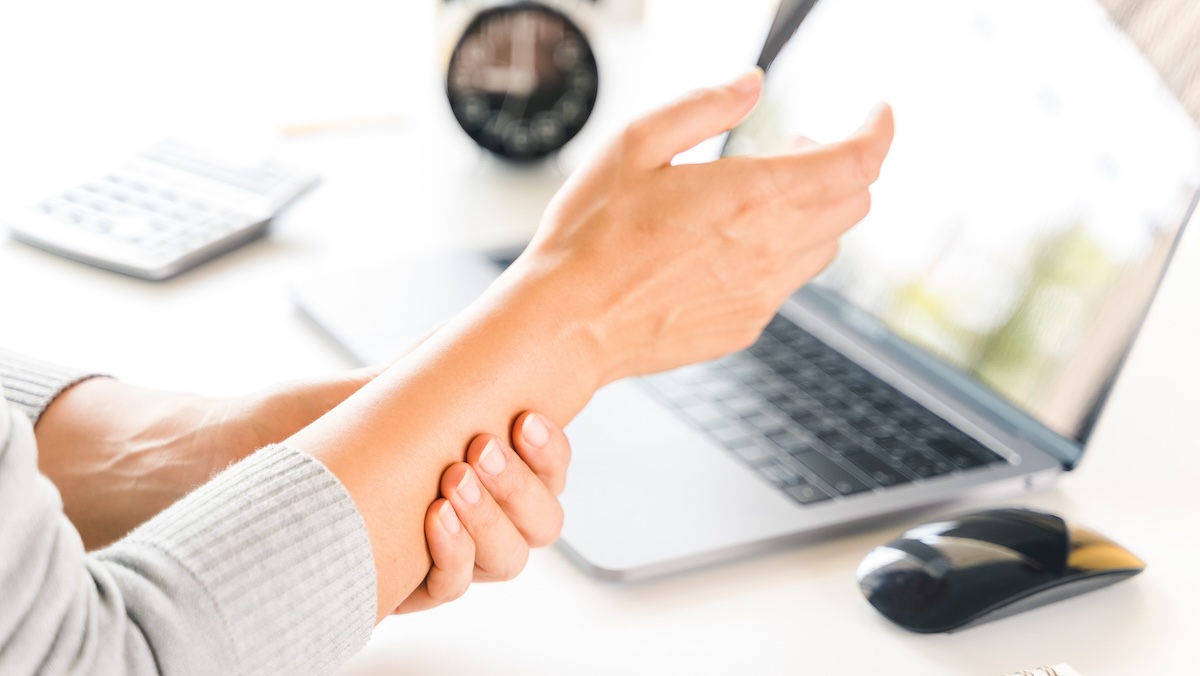
With the advent of touchscreens and trackpads, many assumed the humble mouse would go the same way as a film camera. However, the new technology, often featuring trackpads, has failed to provide the comfort and productivity benefits that a mouse provides.
Since its prototype in the early 1960s, inventor Douglas Engelbart called it a mouse due to its rodent-like shape. Soon after developing the mouse, NASA funding was used to research how long it took volunteers to complete tasks on a computer with a range of devices. The mouse won each time due to its speed and ease of use. Moving an object from one position on a screen to another could be done faster and with less energy by a mouse than the time and effort it took to pick up a pen device and touch it on the screen.
In the 60 years that followed its invention, the standard mouse has been found to impact the wrist from the forearm and stretch and bend the hand sideways from the wrist, which can lead to discomfort and injuries of the shoulders, forearms, hands, and wrists. These issues have been addressed by an evolved ergonomic mouse.
Ergonomics and the Everyday Mouse
Some computer users are prone to strain and injuries like carpal tunnel syndrome especially heavy mouse users such as graphic designers and gamers. Workers who click the mouse every five seconds will make more than 5,700 clicks every workday, and this constant typing and clicking of the mouse over time can cause hand and wrist injuries.
Assessing Your Needs
There’s no shortage of mouse designs on the market to reduce the risk for users. A vertical mouse is ideal for those wanting to keep their hands in a natural position with reduced muscle fatigue and increased productivity. Some vertical mice are excellent for large hands, and others for small and medium-sized hands. And because it's not a right-handed world, there are ergonomic mice designed for left-hand workers too.
Deciding between wireless and wired connections can be a personal preference. The absence of wires can certainly reduce workstation clutter, however, a wired connection can offer more reliability.
The pointer speed on ergonomic mice can often be adjusted between extra low, low, medium, and high settings depending on the user's requirements. Some mice are designed with two thumb buttons, a thumb rest, or a lip to keep the bottom finger from rubbing on the desk.
If you’re in the medical field, consider your mouse allows regular cleaning with liquid disinfectant solutions, so a medical-grade washable mouse might be the one to go for.
Making the Switch
To help reduce mouse clicks consider utilising shortcut keys. Like most changes, there will be an adjustment & learning period, so if shortcuts can be used be patient with yourself while you learn. Cheat sheets can be very powerful. An ergonomic mouse means they can make thousands of daily clicks with reduced risk of injury and pain.
Like any new piece of office equipment, a new mouse can take some time getting used to. A new mouse may mean your hand is in a different position compared to your old mouse. Your hand and wrist may need some time to become accustomed to the new way of working. If this is your case, start slow. Use the new mouse for a few hours daily and interchange it with your old one as you start feeling more comfortable.
Cost Vs Comfort: Breaking Down the Investment
Ergonomic mice can cost more than a ‘traditionally designed’ mouse. But considering the mouse is one of the most well-used pieces of office equipment, the cost is easily justified. If you consider the treatment and lost productivity of an employee with a hand or wrist injury against a little more spent upfront for a purpose-designed mouse, it's an easy decision.
Workplace Wellbeing
When employers dedicate some time to finding out what equipment individual employees need, they're contributing to their worker's safety from musculoskeletal injuries and their wellbeing in general. Employees are more likely to be productive and satisfied with their jobs when their wellbeing is considered and their needs are met.
Desk Mouse Pad Companion
A mouse pad is not always required or recommended. If your ergonomic mouse puts your hand & arm into a neutral position a mouse pad may be unnecessary. Sometimes a mouse pad, as in a completely flat pad, may help with sensor reflection concerns, and this would be dependent on the worksurface & surroundings. If a mouse pad is deemed necessary, invest in a good mouse pad. A non-skid base can ensure the mouse stays in the same place rather than moving across the desk. If necessary the mouse pad can also provide support when made from soft materials. Lycra, a soft gel, or a crystal filling helps relieve pressure on the wrist and potentially adds to the comfort level.
It’s time to have a good look at your mouse. Consider if you could benefit from upgrading the old mouse to one that is far more comfortable to use and improves productivity. Check out our wide range of mice, and be sure to find your perfect match. Contact Ergolink at (08) 9240 7066, visit our website, our showroom or contact us online.